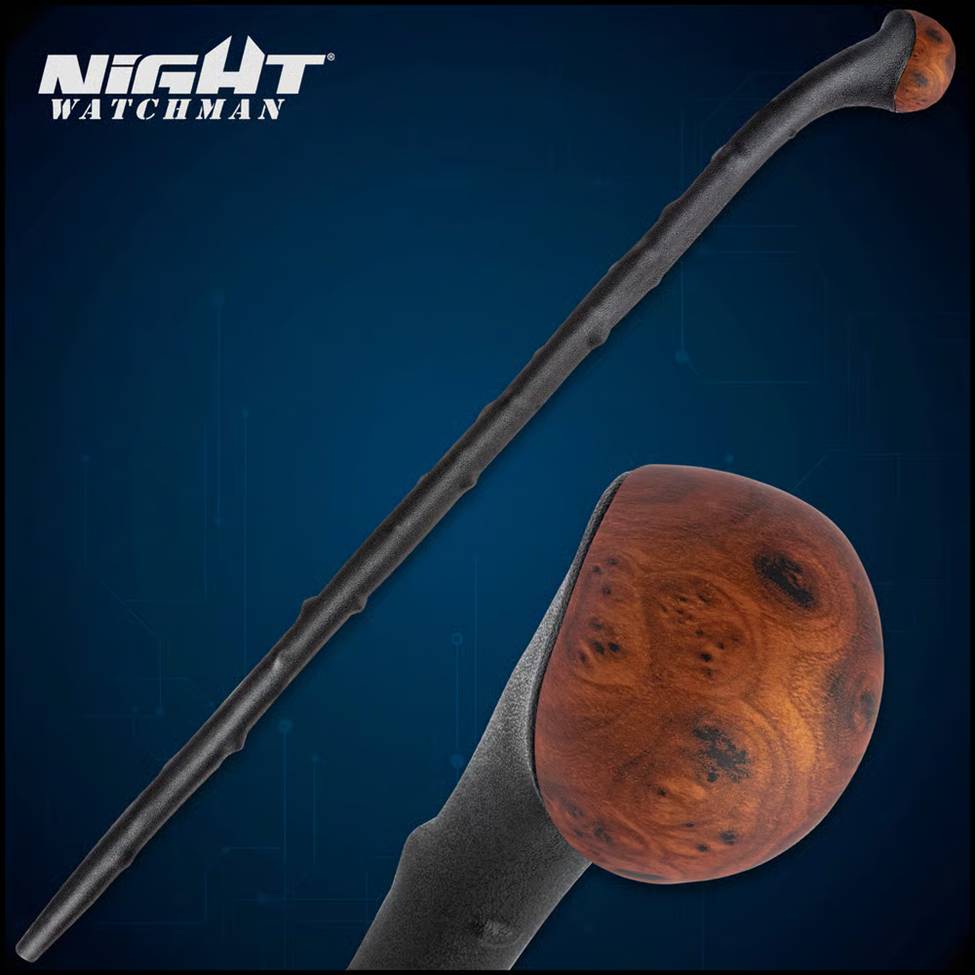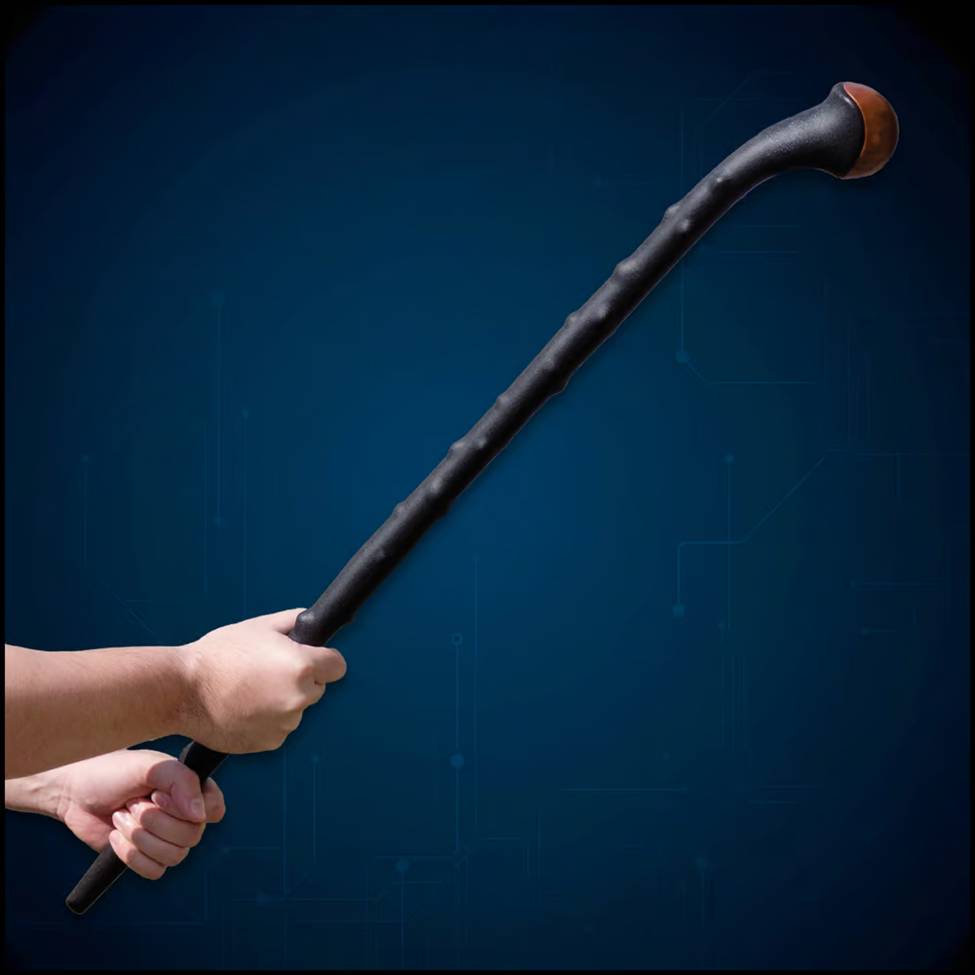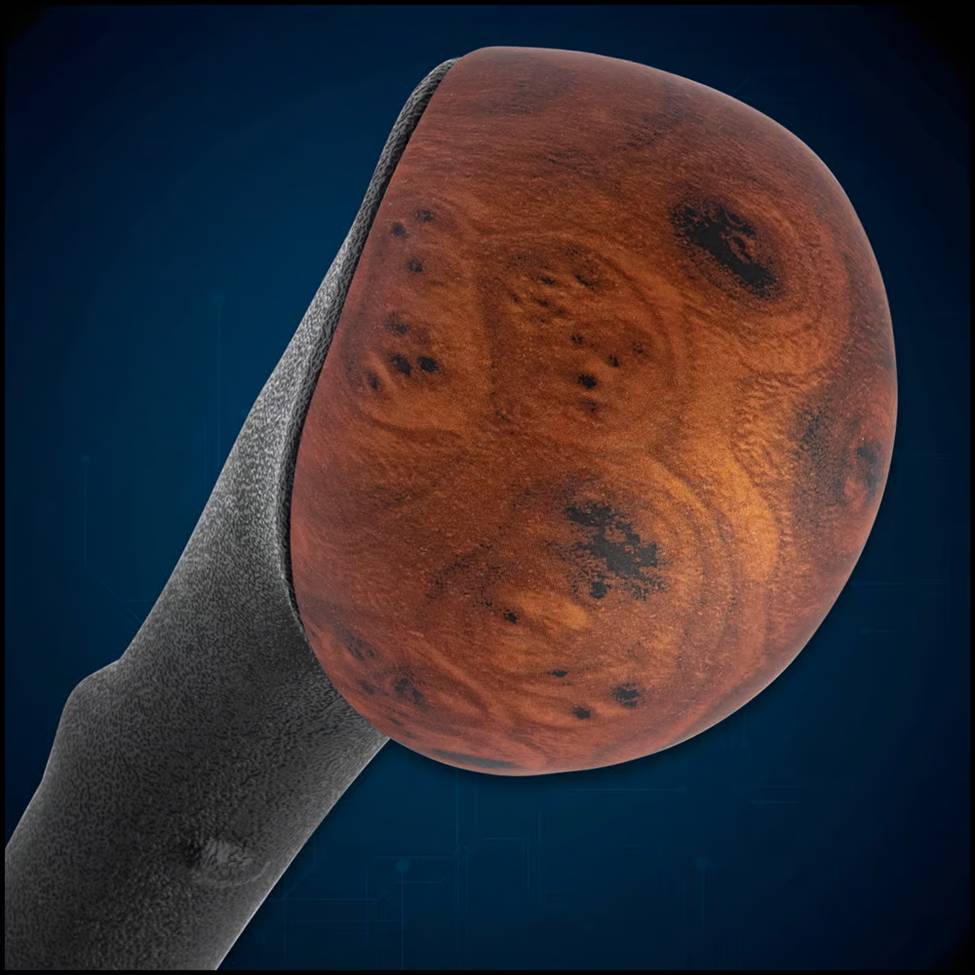Everything You Wanted to Know About a Blackthorn Shillelagh


Ever heard of a shillelagh? That’s pronounced “shill-AY-lee” with stress on the second syllable, and it comes from Irish Gaelic. Sometimes it is also spelled “shillaly”. Here’s what you need to know about these indelible and interesting pieces of Irish culture.
What Is a Shillelagh?
A shillelagh is, at its most basic, a walking stick. The name comes from the Irish Gaelic word “sail éille,” which means “thonged willow,” or “thonged cudgel.” Contrary to that name, shillelaghs are usually made from a wood called blackthorn, though they can also be made from oak. Traditionally, a knotty, knurled stick with a knob at one end would be chosen for the making of a shillelagh, and the stick would be cut, then placed in the home chimney for several months if not longer. This would blacken the stick and give it its characteristic dark, shiny appearance, which before the advent of modern topcoats came from soot and creosote. The heat in the chimney would also harden, dry, and cure the wood.
Typically, a finished shillelagh would be further blackened, and not just by soot. Before the stick was sealed, it would often be treated with graphite, a combination of black soot or grease, or even just a coat of black paint to complete the dark look. After the stick was blackened and cured, it would be finished with a coat of oil, grease, or some other combination of materials to seal it off and protect it against the elements. The finished shillelagh would be polished and would sport a slick, shiny appearance. While the traditional, conventional use of a shillelagh is as a walking stick, they have also been used as self-defense weapons, and an entire Irish martial art, known as Bataireacht, evolved around “stick fighting.”
This is one of the reasons that dense woods like blackthorn and oak were so prized for the creation of shillelaghs, and why knotty, knurled staves were preferred. Some makers even weighted one end of the stick by filling a hollow in the end with molten lead. This would increase the mass of the cudgel and give it the ability to hit harder when swung. Such a shillelagh was known as a “loaded” stick. A typical shillelagh would be about 3 feet in length, making it ideal for use as a walking stick or cane, though longer variants, up to nearly 5 feet, are not unheard of. If unloaded, they are also typically fairly light - under a pound, though a “loaded” version could weigh a pound or more.
What Is Blackthorn?


Prunus spinosa, more commonly referred to as blackthorn, is a flowering shrub, native to the old world. It is a close relative of roses, and produces a very strong, hard, dense wood. Though the grain of blackthorn is rarely straight, it can be twisted, warped, or interlock, which increases the strength of the wood. It polishes well, and because of the nature of the grain the wood is quite flexible and can handle repeated stresses and abuse - one of the main reasons it is a select wood for making walking sticks and cudgels like shillelaghs. Also, the plant is covered in long, sharp thorns, another reason it is preferred for making high-quality, knurled Irish shillelagh.
What Are They Used for?
As stated, the ostensible primary purpose of a blackthorn shillelagh is as a walking stick. Because the wood is both strong and flexible, it makes an excellent cane that can be used as a load-bearing walking aid. Of course, the same attributes make the shillelagh ideal as a brawling cudgel, particularly when properly cut, formed, cured, hardened, and covered with thorns.
.
Better Than Blackthorn: Our Shillelagh


While traditional shillelagh walking sticks and clubs were made with oak or blackthorn, our Night Watchman replica is made with something that is on some fronts superior: molded polypropylene. This lightweight polymer is extremely strong and flexible and, lacking a grain structure, will not crack, warp or split, unlike real wood. Being a synthetic, it will also never need any special care or maintenance to keep it in good shape. On top of that, polypropylene is impact resistant, flexible, and extremely strong and durable. Not only suitable as a walking stick - like a blackthorn version - our Night Watchman shillelagh will admirably fill the other defensive roles of its original Irish namesake.
Best of all, despite the fact that it is not made from the original materials, it maintains all of the original aesthetics, down to the knotted, thorned appearance, with a high-quality, impact resistance faux-wood cap with an authentic wood grain appearance. You can learn more about our Night Watchman shillelagh at the previous link, but if you have any questions about this unique replica before you buy, feel free to get in touch with us.